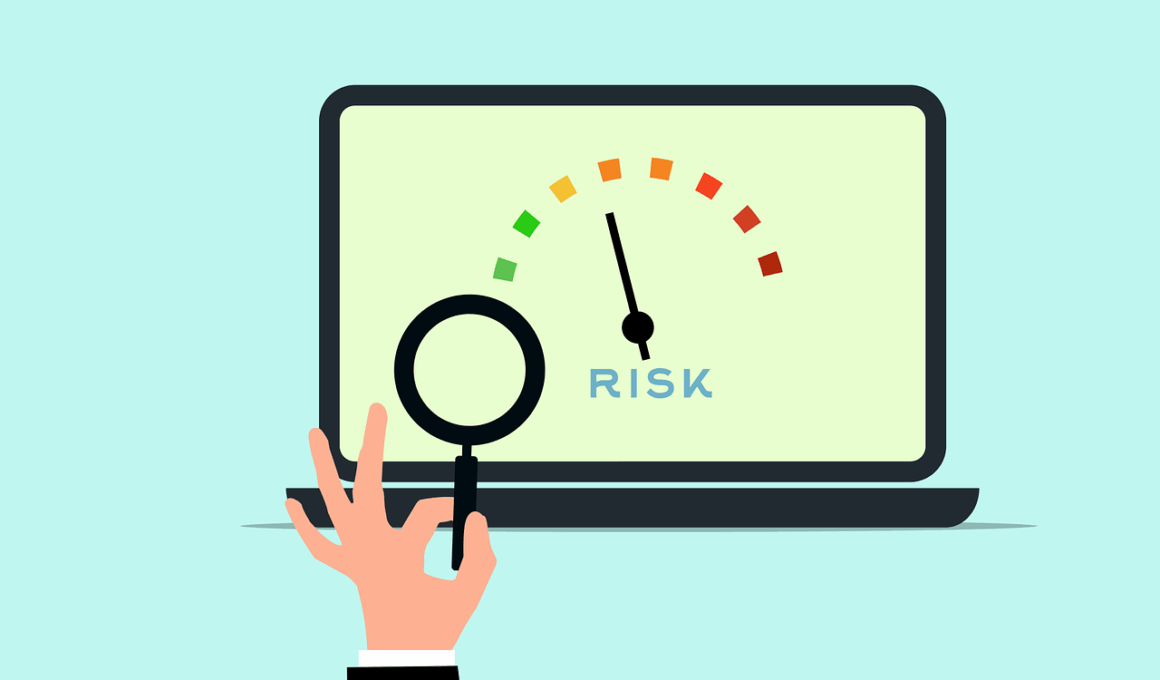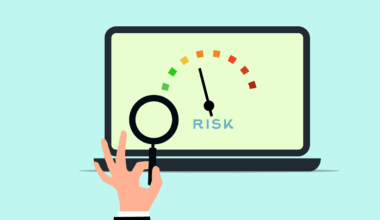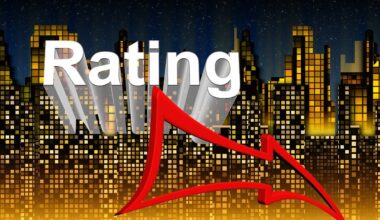Implementing Continuous Risk Monitoring Systems
In today’s rapidly evolving business landscape, risk management has undergone significant transformations. Companies now recognize the importance of continuous risk monitoring systems as vital components of their strategic frameworks. These systems help identify, assess, and mitigate potential risks before they escalate into serious issues. By implementing a proactive approach, organizations can minimize financial losses and protect their reputations. Continuous monitoring involves tracking various operational metrics and external factors that may influence risk levels. This proactive stance enables businesses to react swiftly and efficiently to emerging threats. Additionally, integrating technology into risk monitoring improves reliability and accuracy. Employing advanced analytics and artificial intelligence can enhance data interpretation, providing clearer insights. Consequently, firms gain a competitive edge by being ahead of potential challenges. The investment in risk optimization systems is thus justified by not only protecting bottom lines but facilitating smoother operations overall. The future holds many uncertainties, necessitating robust and adaptable risk management practices. Businesses that invest in continuous risk monitoring stand to benefit significantly from improved decision-making and sustainable growth.
To implement a successful continuous risk monitoring system, it is essential to establish clear objectives and define key performance indicators (KPIs). These KPIs will serve as benchmarks, allowing organizations to assess their risk exposure and the effectiveness of their mitigation strategies. The selection of KPIs should align with business goals and industry standards. Once KPIs are identified, organizations need to harness the right technology tools to facilitate real-time data collection and analysis. Incorporating advanced software solutions and data visualization tools can streamline this process. Moreover, integrating these tools with existing operational systems can enhance communication and collaboration among teams. This ensures that all stakeholders are informed about potential risks and can respond in a timely manner. Training employees on the importance of risk monitoring and their roles within this system is also a crucial aspect for success. Having a culture of risk awareness at all organizational levels encourages proactive behavior in identifying and reporting risks. Thus, continuous risk monitoring is both a technological and cultural endeavor, requiring the commitment of all employees to be truly effective.
The Importance of Data Security
Data security is a fundamental aspect of risk management that cannot be overlooked. With the increased reliance on digital systems and the internet for business operations, the threat of data breaches has surged. Continuous risk monitoring systems must include robust data security measures to protect sensitive information. Organizations should implement encryption, access controls, and regular security audits to safeguard data. Furthermore, continuous monitoring enables the identification of vulnerabilities in real-time, allowing for quick responses to threats. Employees must also be educated on best practices for data handling to reduce the chances of human error. Additionally, regular training sessions can enhance team readiness in the face of potential breaches. Companies should also have incident-response plans in place to address breaches swiftly if they occur. Documenting the incident and analyzing the response can provide invaluable lessons for future risk mitigation strategies. Ultimately, prioritizing data security within continuous risk monitoring is essential for maintaining customer trust and business integrity. Organizations need to treat data security as a continuous journey rather than a one-time effort.
Another critical aspect of establishing a continuous risk monitoring system is relationship management with stakeholders. Effective communication with clients, vendors, and regulatory bodies can significantly enhance an organization’s approach to risk management. Stakeholders play a vital role in providing insights about potential risks encountered externally. Establishing trust can foster a collaborative environment where information flows freely, which is necessary for effective risk identification. Regular meetings and updates will ensure that all parties are aware of current risks and mitigation strategies being employed. Moreover, building a network of reliable partnerships is crucial for strengthening risk defenses. Engaging industry experts in discussions regarding risk trends can provide organizations with a broader perspective. Conducting workshops to share best practices among stakeholders can enhance overall risk awareness and preparedness. Investing in these relationships may reduce the chance of misunderstanding or conflicts that could arise from perceived risks. Effectively managing stakeholder relationships can lead to better-informed strategies, enhancing the organization’s resilience to threats. Ultimately, a holistic approach to risk management encompasses both internal mechanisms and external collaborations.
The Role of Technology in Risk Monitoring
Various technologies are pivotal in enhancing the capabilities of continuous risk monitoring systems. Utilizing cloud computing, for example, allows organizations to store vast amounts of data securely and access it in real time. This accessibility plays a crucial role in identifying risks promptly. Moreover, artificial intelligence (AI) systems have the capability of learning from historical data to predict potential risks. Incorporating machine learning algorithms can further refine these predictions. Consequently, organizations can allocate resources more efficiently and be prepared for scenarios that may arise. Additionally, employing predictive analytics can uncover patterns and trends, thus facilitating better decision-making. Furthermore, dashboards that visualize data can aid stakeholders in understanding risk profiles quickly. Users can monitor changes in real-time, ensuring that swift reactions to risks are possible. The integration of blockchain technology also adds an extra layer of security in transaction-based industries, helping to guard against fraud and data manipulation. Leveraging these technologies in tandem elevates the overall effectiveness of risk monitoring systems, ultimately leading to adequate protection and increased confidence among stakeholders.
For effective continuous risk monitoring, regular reviews and updates of the risk management framework are essential. Risk landscapes are continuously changing, driven by technological advancements and evolving market dynamics. Therefore, organizations must remain vigilant by revisiting their risk assessment processes frequently. This ongoing evaluation will illuminate any gaps or weaknesses within existing strategies, leading to necessary adjustments. Stakeholders should also be involved in these discussions to ensure comprehensive risk evaluation. Adapting to changing circumstances can significantly heighten an organization’s resilience to unforeseen challenges. Continuous learning becomes a valuable asset in this dynamic process, where lessons learned from past incidents can inform future endeavors. Auditing the effectiveness of risk mitigation strategies should also be part of this routine. By systematically reviewing performance against established KPIs, organizations can make data-driven decisions and optimize resource allocation. Moreover, utilizing feedback from employees engaged in risk monitoring can provide firsthand insights, revealing practical challenges encountered on the ground. Consequently, the continual refinement of risk management processes not only strengthens defenses but also fosters an adaptive organizational culture.
Conclusion
In conclusion, implementing continuous risk monitoring systems is essential for modern organizations to navigate the complexities of risk management. By establishing clear objectives and utilizing advanced technology, companies can proactively identify and respond to potential threats effectively. Furthermore, fostering strong stakeholder relationships enhances collaboration and opens avenues for information sharing. Prioritizing data security within these systems safeguards sensitive information and builds customer trust. Regular reviews and updates to the risk management framework ensure adaptability in the ever-changing business environment. Investing in training and fostering a risk-aware culture throughout the organization empowers employees to participate actively in the risk monitoring process. As risk landscapes continue to evolve, so too must our approaches to managing these uncertainties. Continuous risk monitoring serves not just as a defensive measure but also as a strategic advantage. Organizations that embrace this proactive approach not only mitigate risks effectively but also position themselves for sustainable growth. Ultimately, the imperative for businesses is clear: prioritize continuous risk monitoring for future success and resilience against emerging challenges.
Utilizing continuous risk monitoring offers organizations a systematic approach to navigating potential threats. The frameworks developed through these systems can evolve alongside the business landscape. Adaptations, once guided by data and evolving insights, ensure that risk responses enhance overall operational effectiveness. Thus, embracing continuous risk monitoring as a fundamental operational strategy enriches the overall governance and risk management practices.


